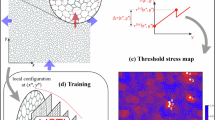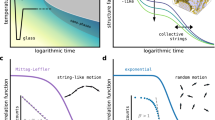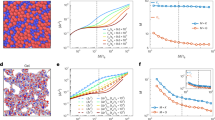Abstract
A PLAUSIBLE explanation1 of delayed fracture of glass is that cracks initially present in the unstressed material gradually extend when glass is loaded. As the cracks extend, the stress at the ends of the cracks increases, until it becomes equal to the maximum stress which the glass can even momentarily withstand ; catastrophic fracture then occurs. Other factors being constant, the rate of crack spreading would be expected to depend on the stress at the end of the largest and most unfavourably orientated crack. Delayed fracture in tension and torsion would therefore be expected to occur in equal times, when the glass is subjected to equal principal tensile stresses.
This is a preview of subscription content, access via your institution
Access options
Subscribe to this journal
Receive 51 print issues and online access
$199.00 per year
only $3.90 per issue
Buy this article
- Purchase on SpringerLink
- Instant access to full article PDF
Prices may be subject to local taxes which are calculated during checkout
Similar content being viewed by others
References
Gurney, C, Proc. Phys. Soc., 59, 169 (1947).
Gurney, C., and Rowe, P. W., A.R.C. Rep. Mem. No. 2284 (1945) (in the press).
Author information
Authors and Affiliations
Rights and permissions
About this article
Cite this article
GURNEY, C. Delayed Fracture of Glass under Tension, Torsion and Radial Pressure. Nature 161, 729–730 (1948). https://doi.org/10.1038/161729b0
Issue date:
DOI: https://doi.org/10.1038/161729b0
This article is cited by
-
Fracture in Bending, Torsion and Radial Pressure
Nature (1968)



